(Published 20100212 / Last updated 20111207)
There are basically three types of BIG problems facing the earth and, ultimately, the survival of man as a dominant species. The majority (1) has to do with the use and the misuse of natural resources, such as oil and water. (2) Then we have the possibility that an asteroid may collide with earth and plunge it into night and chaos. (3) The third hazard is volcanic eruptions that may cause volcanic winter lasting several years, causing severe temperature decreases, long nights and an overall drop of food production. What about climate change? I would put in the first category, because (a) it has to do with how we manage natural resources and (b) the consequences have nothing in common with the immediate destruction of our way of life that would be associated with a “small” asteroid impact or a couple of simultaneous volcanic eruptions of the Tambora, Mt St Helens or Krakatoa type.
Many locations on earth suffer from chronic or acute problems linked with shortages of natural resources, such as rainfall or energy, or both. Most of the projects below were designed to mitigate the impact of the problem; they all look somehow technically feasible, but it is very difficult to decide in advance if they will be economically, energetically, environmentally, ethically or politically sustainable. For some of them, transboundary issues would certainly escalate and eventually result in serious international tension. On the other hand, if the economies of more than one country should vitally depend on a “great transboundary project”, none of the countries would be tempted to jeopardize its survival by threatening the project. Somehow, this would provide a form of deterrence!
Several of the proposals listed below are very old, and they are resurfacing at regular intervals as they are rediscovered by new generations of enthusiasts. They are presented here without much comment.
There seems to be a rule of thumb according to which the more modest proposals are probably more realistic than the more grandiose ones… but one never knows: maybe some day some countries will develop enough interest to jointly start building a huge canal across the Sahara? Or some day our environmental or socio-economic situation will be so desperate that we will have no choice ? Or maybe economic pressure and opportunity (such as those that led to a canal across the isthmus of Panama and the canal linking the Mediterranean with the red Sea; look up the Suez Canal Wikipedia site for some early attempts) will force countries to jointly build and operate large international projects? Or possibly economic constraints and setbacks will be the triggers (see “geothermal” below).
Referring to the precautionnary principle, it is also obvious that, the smaller the project, the lower the probability of causing any irreversible harm. But there is hardly any decision making that does not involve some level of uncertainty and of risk , and no-one can exclude the possibility that we may reach a situation where the planet (i.e. the global human community) will have to decide to put most eggs, or even all the eggs in the same basket in order to survive. That unique basket might be the wrong one, and many small baskets are clearly preferable! No-one can exclude either that we may reach a tipping point that will precipitate the planet into a runaway situation where our survival as a species will be threatened (see the post on tipping points). It remains that with the concept of “geoengineering” being now used in international conferences and the scientific literature, the idea of terraforming seems to have left the realm of science fiction for good!
Protection against asteroid impacts
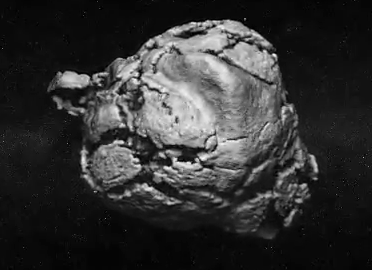
Two approaches can be implemented if we spot an asteroid on a collision course with the earth: “push” it into a trajectory that will miss the earth, or destroy it and break it into peaces that will miss the earth or, at least, cause much less havoc because of the small mass of the pieces compared with the original asteroid. The first option is not completeley unrealistic, if the body is spotted sufficiently early: a very small angular modification of the trajectory would be sufficient de deviate the asteroid or the comet. The figure shows the simulated explosion of asteroid Apophys. From a video by Mark Boslough available here: http://www.youtube.com/watch?v=e4HCTcQ-IWA
In 1908, somewhere in Siberia, an asteroid hit the ground or exploded just before hitting it. What exactly caused the Tunguska blast is not clear. The event was not very destructive, as it happened in a very sparsely populated area. Trees were flattened to the ground in a centrifugal fashion (over 2000 square kilometers; Fischetti, 2011) which clearly indicated the location of the explosion many years after it happened. What is certain is that the body that caused the event came from the sky. There have been many impacts of small and large meterorites over geological times (e.g. Meteor Crater in Arizona), even if most craters have long eroded away, and so have the traces of the tsunamis that were caused by impacts over the oceans. There have sometimes been major consequences, as for instance – according to the current explanation, the disappearance of most dinosaurs at what is known as the K-T boundary (Cretatious-Tertiary boundary, about 65 million years ago; Alvarez et al., 1980) . While most impacts took place in the early phases of earth history, there have also been more recent impacts with biological and climatic consequences (Firestone, 2007)
There are, apparently, a lot of bodies of various sizes out there in the immediate vicinity of earth. Some of them – 158 by the current count (Fischetti, 2011) are larger than 1 km and they could, potentially, destroy civilization. Recent impacts and near misses include the 2008-TC3 and the 2008-DD45; for some time, the asteroid Apophys was a “good” candidate for a collison with the earth in 2028. The probability was estimatesd to be just under 3%, but considering the potential damage, the risk is actually huge (the potential hazard is estimated by astronomers using the Palermo Technical Impact Hazard Scale)
A recent blog suggests that NASA could find a renewed raison d’être in a programme that would monitor asteroids that are potentially on a collision course with the earth, and possibly design systems to deviate them.
Geothermal
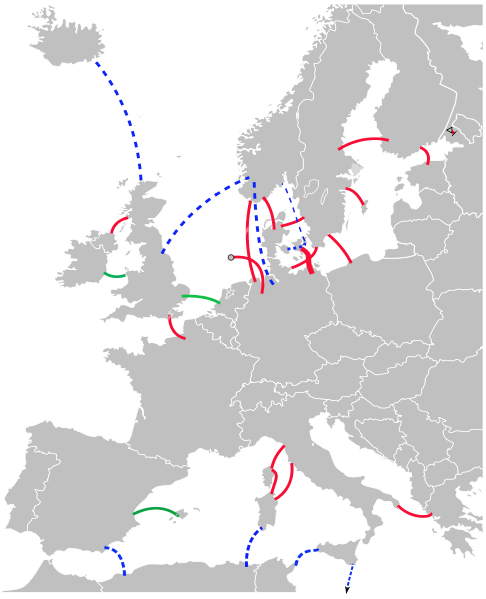
High Voltage Direct Current (HVDC), HVDC interconnections in western Europe – red are existing links, green are under construction, and blue are proposed. Many of these transfer power from renewable sources such as hydro and wind. Source: http://en.wikipedia.org/wiki/High-voltage_direct_current
I just received (20100212) a personalised circular (read: an advert that starts with “Dear René”) from the
Planck foundation (which could also be a commercial company posing as a foundation). The subject of the email was Plan B for Iceland, GeoThermal. So far, there is nothing staggering. But when I started reading the mail, I found that, in fact, Planck is proposing an interesting – and possibly feasible – solution to the problem of the Icelandic debt that arises from the collapse of the Icelandic bank Landsbanki, which operated online savings branches (under the name Icesave) in the UK and the Netherlands. Click here and here for details. If the Icelandic government takes over the debt, Icelanders will have to pay about $5.6 billion to the U.K. and the Netherlands over a 14-year period. This amounts to 17500 US$ per Icelander.
A referendum is to take place in March 2010 to decide on the issue, but it is already clear that Icelanders will refuse to pay. What Plank is proposing, is to repay the debt with energy: Plan B in a nutshell: the ‘Energy for Debt’ option is about building a solid/sustainable geothermal energy harvesting based economy in Iceland under the label of European energy diversity/security. Than Iceland will become Europe’s main energy supplier (…) This ‘Energy for Debt’ proposal is able to revitalize the Icelandic economy very quick and directing structural in the right (i.e. 21st century, with all its energy/resources deficits based) direction. It’s an investment plan that benefits UK/NL/IS all together. Good for Iceland, good for the UK, good for Holland. (Quotes from Planck’s the email)
In the light of Planck’s proposal, I would reword the the first sentence as Many countries suffer from chronic or acute problems linked with shortages of resources, either natural – such as rainfall or energy – or financial . The final sentence of the first paragraph (On the other hand, if the economies of more than one country should vitally depend on a “great transboundary project”, none of the countries would be tempted to jeopardize its survival by threatening the project. Somehow, this would provide a form of deterrence!) also takes on a special meaning if we imagine that Iceland would be a major supplier of clean energy for Europe, that would allow it to repay the debt, or to pay in kind for a number of years to be agreed on, depending on the cost of energy. This would indeed be a form of “deterrence” as the economies of all the countries involved would depend on the sustainability and reliability of the geothermal energy supply (compare with the foot note about the Cabora Basa dam).
A final introductory thought. Everyone is familiar with the famous quote by Georges Clémenceau stating that war is too serious a matter to leave it to be done by the military. Note this is an approximate translation of “la guerre est une chose trop sérieuse pour la laisser faire par des militaires”. I am not trying to go for a very precise translation because there are many variants around on the internet, and I would not know which is the original one, nor whether the statement is not apocryphal altogether. I would nevertheless like to apply it to some of the projects below, in particular those that attempt to correct our “manipulation” of climate through greenhouse gases by “over-manipulating” it through aerosol, or iron fertilisation of the oceans. In a chaotic system with short-term and long-term feed-backs, this has the potential to bring the climate system to wild fluctuations which would benefit no-one. Some scientists see themselves as the new gurus of our societies. They are wrong. Their voice is only consultative and they have no mandate to lead our societies. In the particular area of climate change, the contradictory debate that characterises science is dangerously quiet… In a recent column in Nature about “Experts and democracy”, Colin Macilwain (referring to the EC) states that it cannot afford to leave the impression, […] that it is relying on an elite for advice. Vital expertise resides in many segments of society — including ones that consider themselves relatively marginalized, such as social workers or even engineers. In a democracy, the advice of scientists alone cannot be relied upon to deliver sound public policy. Obvioulsy, this applies well beyond the EU.
- The Dead-Red canal would connect the Red sea to the Dead sea, taking advantage of the fact that the second lies 422 m below sea level.
I could not find any details about the earliest proposals, but it seems that the idea goes back at least as far as the 19th century (see link). A canal (or a big pipeline) could thus prevent the Dead sea from drying up while at the same time producing electricity and freshwater through desalinisation. Even if water would have to be pumped initially uphill for about 200 m, the system would still be economically feasible, and official agreements have been signed to undertake feasibility studies. There is a lot of opposition from environmental groups, but experience has shown over and again that economic pressure tends to ignore environmental concerns (i.e. it is the money of some and not the quality of life of many that eventually runs the world!)
As a proof that the idea remains of interest, there is a 2010 article in Nature (Glausiusz, 2010), according to which it is the need for desalinated water that might eventually convince Palestinian Authority, Jordan and Israel to launch the project, and to collaborate! The Dead sea now lies 35 meters below its 1900-1913 level. If nothing is done, the situation will only get worse, but a Red–Dead conduit would carry with it some real risks. The decision to stop the sea’s decline, […] “is a matter of choosing between bad and worse. But the question is, what is bad and what is worse?”
- Bypassing the Sudd: the Sudd is a vast swamp on the White Nile in southern Sudan, the area of which undergoes marked seasonal changes, from the size of Belgium (or Armenia, or Lesotho) to the size of Greece (or Nicaragua, or about half the size of New Zealand). Based on conservative assumptions of evapotranspiration values of 5 mm/day during the rainy season and 7 mm/day during the dry season, it is easy to calculate that the Sudd evaporates between 2000 (dry season) and 10000 (wet season) m³ of water per second. When these figures were compared with the combined White Nile and Blue Nile flow just before it enters Egypt and the Aswan dam (500 to 8000 m³/sec, depending on the season), it is ovbious that the water “lost” in the Sudd is not negligible. Two thirds of the length of a canal to bypass the Sudd (the Jonglei canal) was actually built, but the works came to a stop in 1980 because of the civil unrest in the Sudan. Bypassing the Sudd would in reality amount to draining the Sudd. As with the Dead-Red canal, the environmental objections are serious, not to mention the deep alteration to the livelihood system of the peope living in the area. It is likely that the long-term restoration of peace in the Sudan will lead to the reactivation of the Jonglei canal project. Let us hope that Southern Sudan will be able to negotiate a fair and sustainable compensation from Egypt for the loss of biodiversity it will incur!
- Lake Victoria – central Tanzania canal
There is far less information on this canal than on the two previous ones. The basic idea is that central Tanzania, esp. Dodoma region, is a semi-arid area with frequent droughts, and water could be brought from Lake Victoria (elevation: 1133m) to central Tanzania taking advantage of the difference in elevation (Mtera dam, in southern Dodoma region, is at 710 m; the area around coordinates 6S 35E, near Sulunga lake, between Dodoma and Singida: 822 m). About half (51%) of the area of Lake Victoria (68,800 km2) belongs to Tanzania. But The lake is shallow (44m average depth), and the total volume of water is thus limited. Every proposal to divert water from lake Victoria could thus significantly reduce the flow of the While Nile, threatening hydroelectric prower generation in Uganda and raise concern in … Cairo (Okbazghi Yohannes).
- Kamel Mostépha-Kara’s “Project K”
Project “K” is named after its proponent, Kamel Mostépha-Kara, the former Director of the National Meteorological Service in Algeria and also the former head of the country’s National Climate Change Agency. Project K combines three components: a 200 megawatt solar tower (SolarPower, made in Australie) that would feed a network of green energy highways to Africa and Europe, a Nigeria-Algeria gas pipeline and a trans-african freshwater canal that would carry 100 billion cubic meters from the Congo river through lake Chad to the Melhrir basin. The annual discharge of the Congo into the Atlantic amounts to 2000 billion cubic meters. According to Wikipedia, Chott Melrhir (34.3°N 6.3°E) has an area of about 6700 km² and is the largest lake in Algeria. It also lies almost entirely below the sea level, the lowest point of Algeria is located here. Little information seems to be available on this project. Sources: a book published in 2008 by Mostépha Kara (Publisher: SAAD DAHLEB, Algiers), link_1 or serach the web for “projet K”
- The idea that icebergs could be towed to places short of water keeps resurfacing…
One of the projects oid the Desert Ice Project (DIP) developed by Ivaylo Avramov (Sofia. Bulgaria). See link.The DIP Project is one of many proposals to move icebergs that break off the Arctic and Antartic and tow them to deserts where they can be used for intensive agriculture or forestry, with a number of ecological advantages (Including food production and CO2 sequestration)… as well as a huge amount of CO2 emissions, as icebergs are characterised by a large drag due to the largest part of the ice being under water.
More recently, J. Collins Rudolf wrote in the The International Herald Tribune (20110522) that Every year, tens of thousands of icebergs containing billions of gallons of fresh water calve off the glaciers of Greenland and Antarctica into the ocean, where most eventually drift into warmer waters, break up and melt. It would be nice to haul a few icebergs to someplace short on water — southern Spain, perhaps, or western Australia — and melt them for drinking water. It is a seemingly outlandish idea that has been around for decades and has never been successfully realized. But a small group of scientists, engineers and entrepreneurs believe it can be done economically and are doggedly pursuing government and private-sector support for a test in the North Atlantic. Their plan is to use tugboats to haul a large iceberg off Newfoundland to the arid Canary Islands, near the Moroccan coast. ‘‘I think it’s a valid concept,’’ said Peter Wadhams, a professor of ocean physics at the University of Cambridge who is seeking funds for the test along with partners in Canada and France. ‘‘It would be very nice to try it out and see if it works.’’ The group has struggled to attract financing but was given a lift about two years ago, when Dassault Systèmes, a French design company specializing in 3-D imaging, volunteered to create a computer model of the iceberg’s journey. The company created a ‘‘full virtual world,’’ including ocean currents and wind, the iceberg’s melt rate and the tugboat’s traction force and fuel consumption, said Cédric Simard, director of the project. The models proved that the iceberg could cross the Atlantic in about 140 days and deliver a commercially useful quantity of ice, Mr. Simard said. The company worked closely with Georges Mougin, a Frenchman who in the 1970s collaborated with a Saudi prince on a plan to tow icebergs from Antarctica to the Middle East — an effort that was almost certainly doomed from the start and squandered millions of dollars. ‘‘The absolutely fatal flaw in that plan is that you have to tow the icebergs across the equator, and they melt,’’ Dr. Wadhams said. ‘‘So iceberg towing got a bad name because the initial stimulus came from somebody who was somewhat deluded.’’ Despite his involvement in the Saudi project, Mr. Mougin is ‘‘an authentically valid engineer in his own right’’ who has designed a coating for the underside of an iceberg to reduce its melt rate, Dr. Wadhams said. With the 3-D model in hand, Mr. Mougin, now in his 80s, is seeking financial partners for a test run. ‘‘He works like a 30-year-old guy,’’ said Mr. Simard, the project director.
- Artificial glaciers
Chewang Norphel, an Indian engineer has developed a system to dam water during winter in high altitude artificial pools, where if freezes to be released later in spring and early summer when it is needed for agriculture. The subject is covered in a recent October 2009 Science aticle. The technology has a lot of potential in all mountain areas, especially in tropical areas. Refer to the original Science article or to several other links.
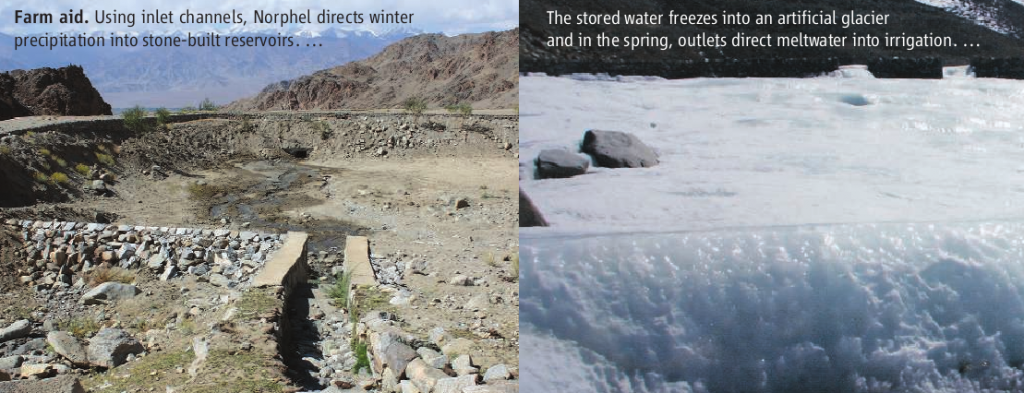
The photographs show the site of an artificial glacier in summer (left) and in winter (right). Source: Science 30 October 2009: Vol. 326. no. 5953, pp. 659 – 661
- Iron Fertilisation of the Oceans
As CO2 concentrations increase in the atmosphere, several scientists suggested that the “photosynthesis of oceans” (CO2 absorption by ocean plants) could be boosted by increasing the growth of phytoplankton (microscopic free-floating algae that occur in all fresh water bodies and in oceans). The growth of land plants is limited by the short supply of nitrogen and phosphorus that occur in low amounts in soils, which is why nitrogen and phosphorus containing fertiliser accelerates plant growth. In oceans, the main limiting factor is iron. Iron fertilisation should, therefore, accelerate CO2 uptake by algae and contribute to reducing CO2 concentrations in the atmosphere. This site investigates the background and geological record, the theory and some experiments to date. The Wikipedia article has most of the recent scientific literature on the subject. Iron fertilisation is mentioned in the recent MacEwan book “Solar” (2010): The idea was to dump many hundreds of tons of iron filings in the ocean, enriching the waters and encouraging the plankton to bloom. As it grew, it absorbed more carbon dioxide from the air. The precise amount could be calculated in order to claim carbon credits, which could be sold on through the scheme to heavy industry. If a coal-burning company bought enough, it could rightfully claim that its operations were carbon neutral. The idea was to get ahead of the competition before the European markets were fully established. Boats and iron filings needed to be sourced, the proper locations established, and all the legal footwork completed. Toby Hammer needed to get on the job. Some marine biologists, no doubt with secret plans of their own, had heard rumours of his scheme and had been arguing in the press that interfering with the base of the food chain was dangerous. They needed to be blasted out of the water with some sound science. Beard already had two pieces ready for publication, but it was important to hold back until the right moment.
The iron fertilisation of oceans raises many questions that are summarised in the mentioned link: (1) just as with “artifical rainmaking” and other forms of “weather enhancement”, there is insufficient scientific evidence to suggest that it works; (2) short and long-term ecological impacts are impredictable and (3) there is probably insufficient incentive now in the frame of the UNFCCC arrangements to make it economically feasible.
- Climate manipulation
This section is about climate manipulation, a concept which is difficult to separate from weather manipulation. If we persistently modify weather, we will eventually modify climate, since climate is defined as average weather.
Everyone has heard about cloud seeding and hail suppression, which are routinely practiced in many countries. The fact is, however, that no-one has ever shown convincingly that these techniques do work, and scientists insisting on fool-proof evidence tend to disagree with “practionners”. Who are the “practitionners?” Essentially the companies that sell weather manipulation services, people and institutions (such as farmers and farmers’ associations) who buy them, and … politicians. I often say that the determinant factor in rainmaking in the Sahel is the colour of the plane that seeds the clouds during electoral campaigns.
The World Meteorological Organisation (WMO) is caught between the directors of national meteorological services (who are practitionners) and scientists. Therefore, WMO very cautiously expresses the dilemma as follows in a recent document: The Expert Team concluded that the large gap that has developed over the past 25 years between cloud physics and chemistry researchers and operational weather modification community needs to be bridged.Rainmaking will, of course, never die. In 2011 it resurfaced with a high profile as aquiess, the global rain project. Visit their website and enjoy the tricks and the prose. How do you like this: “aquiess utilizes government, military and corporate data, supporting proprietary systems, to provide Oceanic Rainfall Acquisition (ORA)
and Temperature Reduction Capability (TRC) into client targets around the world.” Translation, please! The big jargon is important, especially if you want to catch big UN Organizations, as perfectly illustrated by the famous oil sniffer hoax ?
Much more down-to-earth, we have micro-climate manipulation (MCM), i.e. techniques developed by farmers and which has been around for ages; it provides one of the basic techniques to adapt crops to climate. MCM is a set of efficient yet “harmless” techniques such as mulching, shelterbelts, greenhouse cultivation etc that modify the local climate in which plants or animals develop. The champion of microclimate manipulation has been Kees Stigter for many years now, starting in the 1980s (Stigter 1984, 1987, and certainly the forthcoming Stigter, 2010, as well as the WMO Guide to Agrometeorological Practices, which was also coordinated by the same author).
Next to traditional climate modification, we now have a group of high profile scientists who suggest that we could also go for larger scale modification of climate. At the recent Third World Climate Conference (WCC-3) in Geneva, Yuri Izrael, the very well known senior Russian scientist and vice-chairman of the IPCC presented his views on “Stabilization of climate on the basis of geoengineering”. He thereby illustrates the school of climatologists who support the view that experiments should be carried out to assess the feasibility of controlling climate, esp. decreasing temperatures through the injection of areosol into the atmosphere, and he presented methods that have been developed and tested locally in Russia to emit aerosol and observe local climate effects. Interestingly, Paul Crutzen, who shared the Nobel Price for Chemistry in 1995, recently also suggested in an interview with La Recherche-Le Monde that 1 to 2 million tons of sulphur could be injected into the atmosphere per year to mimic the effects that occurred, for instance, after the eruption of Mt Pinatubo in 1991. Crutzen also mentions (ironically!) that large scale climate manipulation is a taboo subject. I say “ironically” because I like the idea that the great priests of the climate change religion seem to be tempted by heresy! When asked if he thinks that he could influence politicians and convince them to launch a “climate G8”, Crutzen answers: I have thought of it, but I have never suggested it openly. This is a task that is reserved to the scientific community. I do not feel the need to become a great priest in this area. Thank God!
The fact is that there are many problems with geoengineering: see, for instance, the publication by Bala (2009; geoengineering_2009_41). Most of them have to do with the complexity of the climate system, manipulations of which can result in unpredictable effects on global radiation, the temperature regimes and the water cycle.
- Supplying Europe and the world with electricity generated in the Sahara
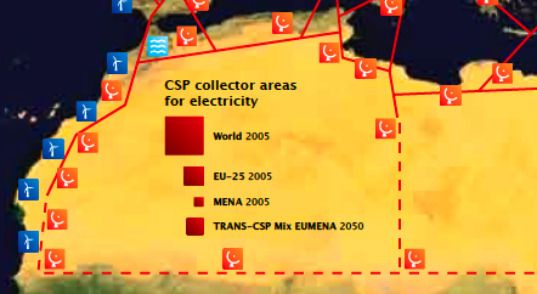 The Desertec Foundation wants to dwarf Kamel Mostépha-Kara’s “Project K” idea to erect a 200 MW solar tower: they propose to build concentrating solar power plants throughout Northern Africa with a 500 times larger power output, i.e. 100 GW. This would also include desalinization plants and a “forest”. Amazingly, the land area that would be required is rather small: the red squares in the map represent the area necessary to meet the energy demand of the world, the EU and MENA in 2005. The proponents of the project have no doubt that the plants could cope with the energy demand of 10 billion people, the curently projected maximum human population!
The Desertec Foundation wants to dwarf Kamel Mostépha-Kara’s “Project K” idea to erect a 200 MW solar tower: they propose to build concentrating solar power plants throughout Northern Africa with a 500 times larger power output, i.e. 100 GW. This would also include desalinization plants and a “forest”. Amazingly, the land area that would be required is rather small: the red squares in the map represent the area necessary to meet the energy demand of the world, the EU and MENA in 2005. The proponents of the project have no doubt that the plants could cope with the energy demand of 10 billion people, the curently projected maximum human population!
I admit I was a bit (pleasantly) surprised to read in Le Monde of 20100707 that the project is gaining support. Under the title “L’industrie européenne veut ouvrir des autoroutes Sud-Nord de l’énergie” Jean-Michel Bezat writes that more than twelve European companies established TransGreen, with the aim of transporting solar electricity to Europe. The companies include Siemens, EDF, RTE, Alstom, Areva, Nexans, la Caisse des dépôts…) as well as an Egyptian company Taqa Arabia. The agreement was signed on 20100705 in Paris, vith a view to study the feasibility of carrying electricity across the Mediterranean: six under-water lines connecting North Africa and the Middle East to Spain, Italy, Greece and Turkey. Where will the power come from? Guess: from the solar powerplants of Desertec. The objective is to supply, by 2050, up to 15% of the European energy consumption. The French Minister of the Environment estimates that these energy highways are a must. Of course, nothing French is simple nor straightforward: the political background is one of Sarkozy’s 2008 pet projects: l’Union pour la Méditerranée.
- Wind energy from the stratosphere
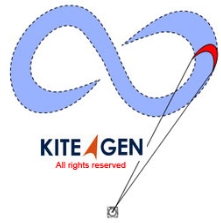 At least two proposals suggest that we could harness the energy of strong winds blowing in the atmosphere, starting at about 1000 m altitude (in the troposphere; Kite Gen project) to the atmospheric layers between 10 km and 50 km. 10 km is roughly the cruising altitude of flights and corresponds to the lower limit of the stratrosphere (Sky WindPower project). The Kite Gen website is not the best example of clarity… Apparently, the “Power plant” is made up by a wing (kite) that is controlled by a Kite Steering Unit that pilots it over a predefined flight path that fits into about 1 km². In the picture, the kite flies a 8-shaped trajectory. Power output is in the 100MW range.
At least two proposals suggest that we could harness the energy of strong winds blowing in the atmosphere, starting at about 1000 m altitude (in the troposphere; Kite Gen project) to the atmospheric layers between 10 km and 50 km. 10 km is roughly the cruising altitude of flights and corresponds to the lower limit of the stratrosphere (Sky WindPower project). The Kite Gen website is not the best example of clarity… Apparently, the “Power plant” is made up by a wing (kite) that is controlled by a Kite Steering Unit that pilots it over a predefined flight path that fits into about 1 km². In the picture, the kite flies a 8-shaped trajectory. Power output is in the 100MW range.
The Sky WindPower approach basically flies several (two to four) windmills at the lower stratosphere like a kite (FEG, 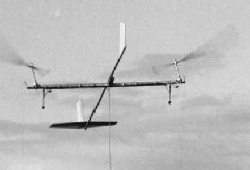 flying electric generator). The project has done a number of experiments, but the proponents are much more careful that Kite Gen in quoting power output figures! In fact, while Kite Gen is obviously less advanced that Sky WindPower, they also hide many technical details because their approach is more business-oriented; Sky WindPower develops in an academic context and seems more advanced and more realistic in addition to being more open. Personally, I think that flying a wing that is probably made from light fabric is less risky than flying a heavier structure of several wind turbines, and that may eventually crash! Maybe we need the scientific approach of Sky WindPower to be applied to the Kite Gen method?
flying electric generator). The project has done a number of experiments, but the proponents are much more careful that Kite Gen in quoting power output figures! In fact, while Kite Gen is obviously less advanced that Sky WindPower, they also hide many technical details because their approach is more business-oriented; Sky WindPower develops in an academic context and seems more advanced and more realistic in addition to being more open. Personally, I think that flying a wing that is probably made from light fabric is less risky than flying a heavier structure of several wind turbines, and that may eventually crash! Maybe we need the scientific approach of Sky WindPower to be applied to the Kite Gen method?
- Solar energy from space: Space-Based Solar Power, SBSP (also Space Solar Power, SSP)
Satellites in geosynchronous orbit are exposed to the sun virtually all the time. They have therefore, the potential to provide a near-continuous supply of energy, if it can be transmitted to earth. Early studies include those by NASA and, more recently JAXA (Japan); see also Wikipedia. At about the same time when the countries, including China and the US, were agreeing for the first time on a generalised reduction of emissions in Copenhagen in December 2009, the California Public Utilities Commission gave its blessing to an agreement that would see the Pacific Gas and Electric Company buy 200 megawatts of power beamed down from solar-power satellites beginning in 2016 (Source: New Scientist.) Few details are known about the project, which involves a company (Solaren) responsible for the development of the satellites. Strangely, at the time of writing, Solaren does not appear to have a website, but just a link to a page where information can be requested. It seems that the project involves concentrating solar energy using mirrors, and beamimg it to earth using microwaves. Most comments focus on the cost of launching the satellites, the need to develop light mirrors, and the potential environmental impacts of the microwave (or laser) used to transmit the energy to earth.
References
Alvarez, L.W., W.Alvarez, F.Asaro &H.V. Michel. 1980. Extraterrestrial cause for the Cretaceous–Tertiary extinction. Science 208 (4448): 1095–1108
McEwan, I. 2010, Solar. Kindle Loc. 3067-74.
Firestone,R. B. , A.West, J.P.Kennett, L.Beckere, T.E.Bunch, Z.S.Revay, P.H.Schultz, T.Belgya, D. J. Kennett, J. M. Erlandson, O. J. Dickenson, A. C. Goodyear, R. S. Harris, G. A. Howard, J. B. Kloosterman, P. Lechler, P. A. Mayewski, J. Montgomery, R. Poreda, T. Darrah, S. S. Que Hee, A. R. Smith, A. Stich, W. Topping, J. H. Wittke & W. S. Wolbach. 2007. Evidence for an extraterrestrial impact 12,900 years ago that contributed to the megafaunal extinctions and the Younger Dryas cooling. PNAS, 104(41):16016–16021
Fischetti, M. 2011. Death by Asteroid: What we don’t know could hurt us. Sci. Am., 304(3):80.
J. Glausiusz, 2010. New life for the dead sea. Nature, 464:1118-1120.
Colin Macilwain, 2009. Experts and democracy, Nature, 462:275.
C.J. Stigter, 1984. Traditional use of shade: A method of microclimate manipulation. J. Meteorol. Atmos. Physics, 34(1-2):203-210.
C.J.Stigter, 1987. Traditional manipulation of microclimatic factors: knowledge to be used. 1987. ILEIA Newsletter, 3(3):5-6.
C.J. Stigter, Ed. 2010. Applied Agrometeorology. Springer. Approx. 420 p., ISBN: 978-3-540-74697-3.
La Recherche-Le Monde, 2009. Talk with Paul Crutzen on the subject “Et si l’on manipulait le climat?”. Hors Série La recherche-Le monde, Nov.-Dec. 2009, pp 46-49.
Notes
Most of the projects listed above are well know. They are well covered in Wikipedia, which constitutes one the of most easily accessible sources.
For an up-to-date account of the great projects in the Nile Basin, including politics from Dodoma-Tanzania to Cairo, refer to Okbazghi Yohannes’ Water resources and inter-riparian relations in the Nile basin: the search for an integrative discourse, SUNY series in global politics, SUNY Press, 2008, 256 pages.
The Cahora Bassa dam in Mozambique (Tete province) is one of the largest dams in Africa. Its construction began while Mozambique was still under Portuguese rule, and its main customer was planned to be South Africa, in particular the industrial area of Johannesburg. Although the Portuguese destroyed major infrastructures before they left Mozambique in 1975, Cahora Bassa “survived” the difficult period from 1960 (beginning of construction of the dam) to independence (1972) to 1992 (end of the civil war with Frelimo). Mozambique played an important role among the Frontline States opposing apartheid in South Africa. It nevertheless managed to keep Cahora Bassa operational, inspite of sabotage actions by Frelimo who frequently targeted the dam and the powerl lines. This is a good example of realpolitik: the Portuguese and the Mozambican governments needed the income generated by the dam, and south Africa needed the electricity.
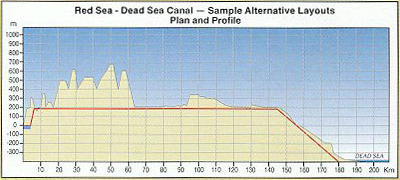
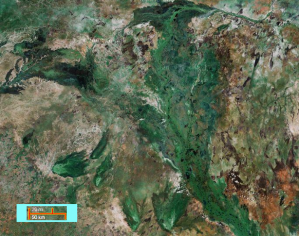
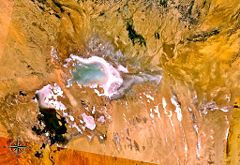
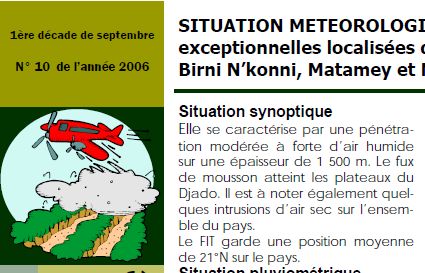
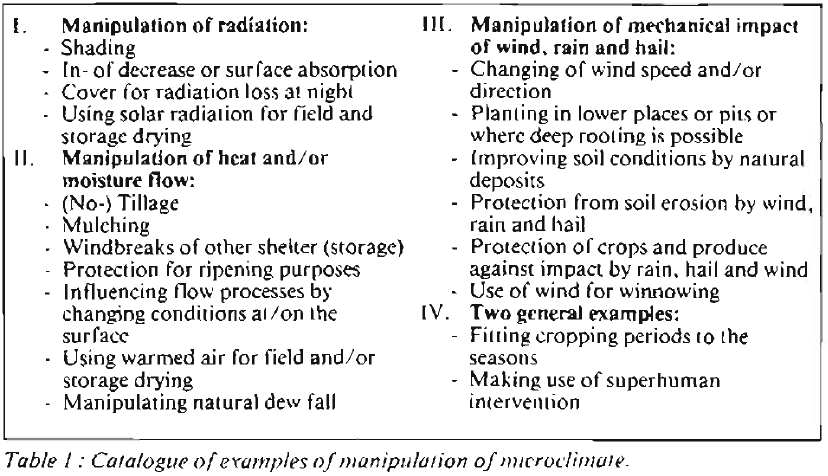
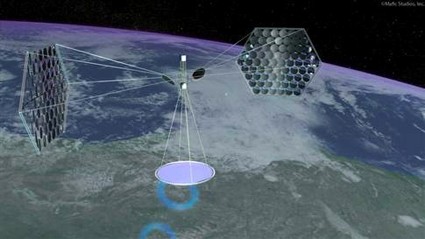
Russian Gauge Railway in Krakow.
A China-Poland connection on Russian gauge (Railway)would seriously endanger the Somali pirate booty opportunities.
Errr?
Il manque trois mots au titre, non?
Three words are missing in the title, aren’t they?
…save Homo Sapiens on the planet
Assurément/indeed… Mais la planète et nous, ça fait presque un. A long terme, la planète se sauvera, c’est sûr, avec ou sans nous. Tu connais la fameuse formule de Drake sur le nombre de civilisations extra-terrestres. Il est extrêmement probable que d’autres civilisations existent, mais pourquoi n’en voyons-nous rien? Parmi ces civilisations, il doit y en avoir qui sont beaucoup plus avancées que nous, à beaucoup de points de vue qu’on peut imaginer: économique, éthique, technologique, hédonique, félicitaire (j’invente le mot pour l’occasion) etc. Ces civilisations ont peut-être des lois de non-ingérence (la fameuse Directive Première de Startrek!), ou de un “impératif de rester chez soi” ou alors, et c’est ce que je crois, les civilisations finissent par se détruire avant de comprendre que le technologique et l’économique doivent être subordonnés aux trois autres catégories. Si nous ne recevons pas de signal des petits Martiens, c’est parce qu’ils ont pris la même route que nous et se sont suicidés en tant que civilisation avant d’être capables de venir nous saluer.
Ma position est qu’il faut être rigoureux sur ce genre d’affirmations fausses trop souvent répétées.
Nous proférons assez d’inexactitudes inconscientes pour ne pas en remettre une couche en toute conscience.
Amusons-nous avec une psychologie, certes un peu facile, des effets collatéraux de la vérité dont il est question:
1. Parler de la mort de la planète et de sauver la planète, active notre côté suicidaire plus ou moins universellement répandu. “Après tout, m…!”
2. Se limiter à l’énoncé exact selon lequel, de toute façon, avec ou sans nous, la planète poursuit sa course impavide, active en revanche la crainte tout aussi répandue, dont à peu près personne n’est exempt, d’être abandonné. Et ça, on n’aime pas, hein, une fois !
Comme toujours un grain de vérité, si petit soit-il, nous rend meilleurs et plus adéquats.